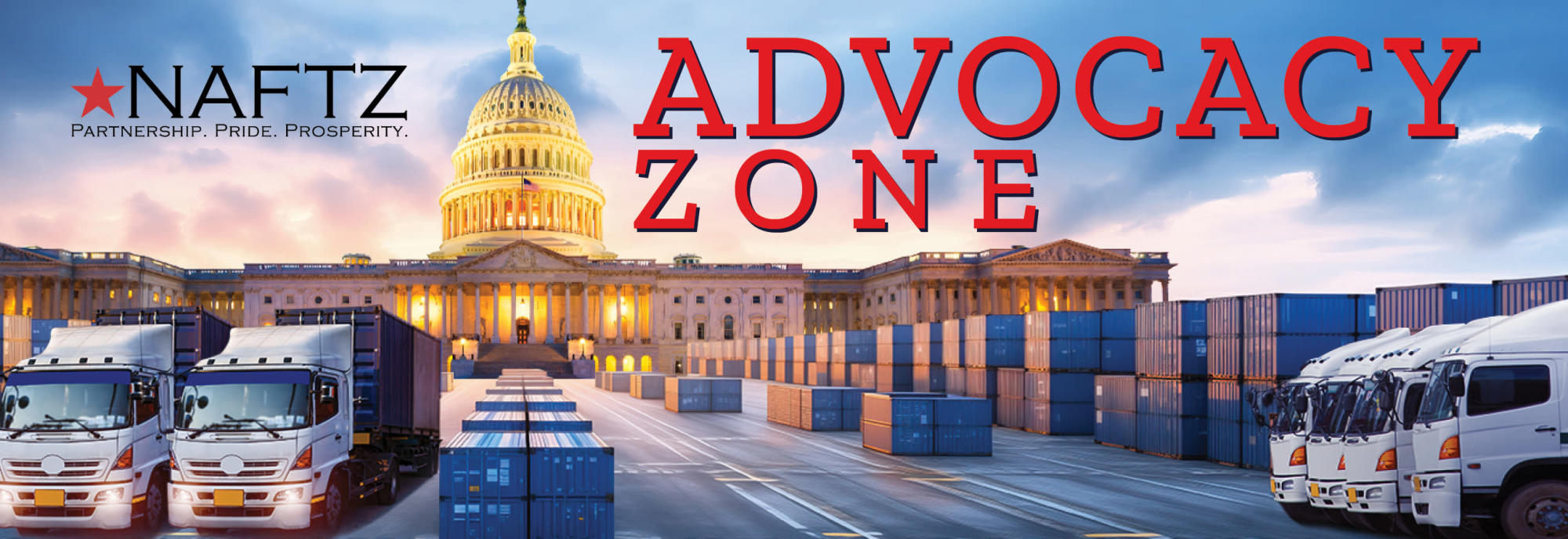NAFTZ Testifying for Fair Treatment of U.S. FTZ Manufactured Goods
NAFTZ Testifying for Fair Treatment of U.S. FTZ Manufactured Goods
The Advocacy Zone

As the trilateral trade pact between the United States, Canada and Mexico—United States‑Mexico‑Canada Agreement (USMCA)—approaches its mandated six-year review, the Office of the U.S. Trade Representative (USTR) has launched a formal consultation process to gather stakeholder feedback on how the agreement is operating. NAFTZ submitted written comments on November 3 and is scheduled to testify during the public hearing to be held December 1-3, 2025.
For many years, NAFTZ has fought to correct the disparity first created by NAFTA and perpetuated in USMCA between U.S. FTZ manufactured goods and those manufactured in Mexico and Canada. Implementing legislation denies U.S. manufacturers similar duty treatment on components used in U.S. FTZ-based production to that provided to producers in Mexico and Canada, by excluding goods produced in a U.S. FTZ from qualifying for NAFTA preferential-duty treatment when entered into the United States. And exports from a manufacturing FTZ to Canada and Mexico are initially treated as imports into the United States, requiring payment of U.S. duties before export, whereas such duties are avoided in Mexico and Canada before exporting to the U.S. All of this means higher cost of goods sold and less manufacturing in the U.S.
As the trilateral trade pact between the United States, Canada and Mexico—United States‑Mexico‑Canada Agreement (USMCA)—approaches its mandated six-year review, the Office of the U.S. Trade Representative (USTR) has launched a formal consultation process to gather stakeholder feedback on how the agreement is operating. NAFTZ submitted written comments on November 3 and is scheduled to testify during the public hearing.
In this comment period and hearing, USTR is aiming to capture views on implementation, compliance and potential improvements well ahead of the formal “Joint Review” slated for July 1, 2026. NAFTZ’s comments highlight both challenges U.S. FTZs face in competing under the implementation of USMCA.
If you have are impacted by this trade agreement disparity, we need to hear from you. Perhaps you are manufacturing in a U.S. FTZ and seeing a cost impact when your goods are compared to those of your Mexican or Canadian competitors. Or maybe you have lost manufacturing opportunities in your area because the FTZ program did not offer the needed tariff relief to make U.S. manufacturing competitive to locating in Mexico or Canada. If so, please contact our Director of Advocacy and Strategic Relations, Melissa Irmen, at mirmen@naftz.org to share your story and get involved with our efforts to correct this disparity and strengthen U.S. manufacturing.
